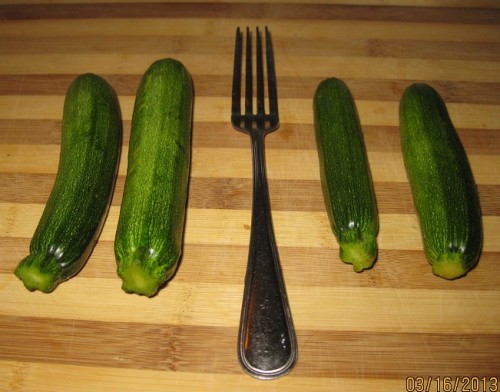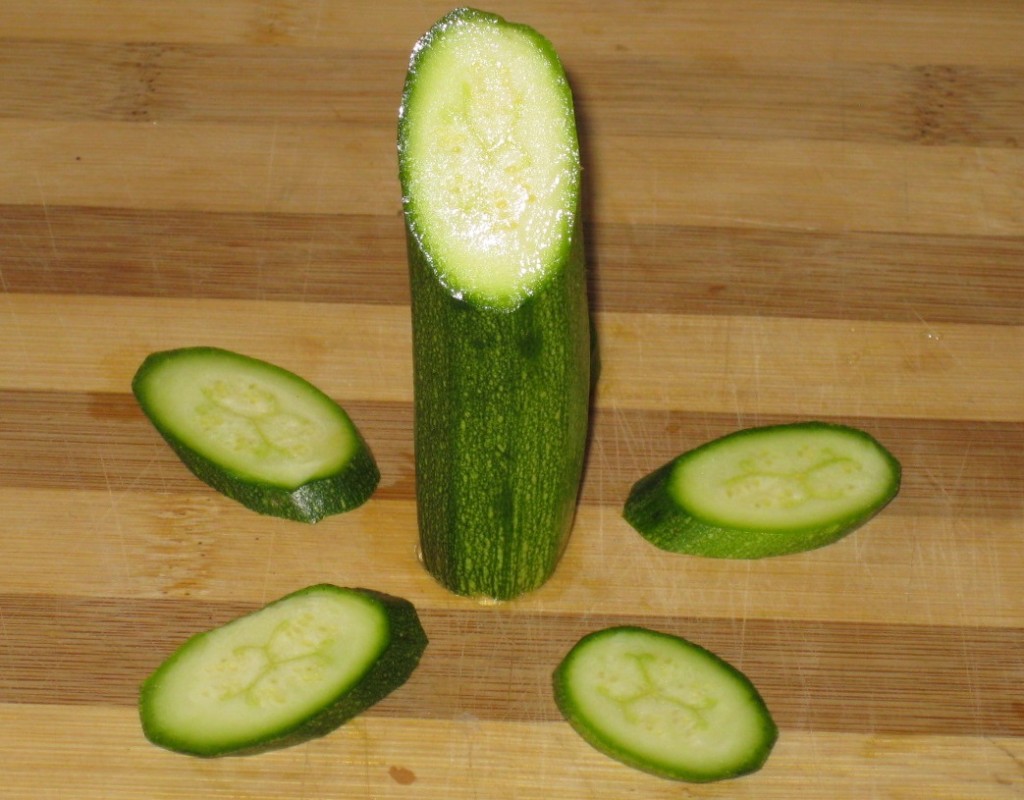Being from Texas, where everything is BIG, this is an unusual title for me to post. However, it is true: Sometimes, smaller is in fact better!
A couple of weeks ago, I was in San Antonio at my favorite supermarket, HEB Stores. The produce department there seems as large as a city block until you get used to it … gotta love that! One of the large bins held gorgeous zucchinis of various sizes and it was calling my name. I walked up, tore off a plastic bag and began hunting the smallest, shiniest squash I could find. Having bagged my limit, I backed out of position as a gentleman walked up and began searching for the zucchini “freaks of nature”.
You have seen the pictures of the fellow that won the State fair with his 768 pound world record pumpkin, right? I always wondered who would buy such a monstrosity? On this day in San Antonio, my fellow squash lover would have been that guy had the Blue Ribbon winner been green and oblong instead!
Frankly, I wanted to walk up to him and forcefully explain how to pick out squash. I could not do that then, but I can tell you now!
First and foremost, you want small squash … or eggplant … or cucumbers … or green beans. If it is a vegetable and has seeds inside, small is better. Why? Bigger vegetables have larger and more seeds. Are you hoping to have squash seeds for dinner? Sure, if you are going to make stuffed zucchinis, you will need a little size to work with, but you will be scraping out the seeds to make room for the stuffing. Produce marketing gurus are obsessed these days with “baby” offerings because they are premium products (marketers love “premium”, particularly premium prices).
Almost always, small is better in the produce department. One of the times when it might not be is with the dwarf or mini varieties. If you come across a package of mini zucchini that is 4 inches long, that baby is likely full grown and full of seeds! This holds true for eggplant and others, too. Just make sure to stay with the standard-size varieties when looking for babies.
What else should you look for in a zucchini? Shiny skin is an indicator of freshness, but a little dirt may dull the look without indicating a problem at all. Another characteristic to seek is stiffness/firmness. Bend it a bit. Is it limp, or does it seem like it would “snap” if you broke it in half?
The picture above this post is of a few of the zucchinis I found at a farmers market here in Boquete, Panama where we are hanging out at present — amazingly, that is a regular size dinner fork! I felt like one of Pavlov’s dogs at bell ringing time when I saw these jewels. The following picture illustrates the almost total lack of seeds inside them. Yes, they were good!




No Comments